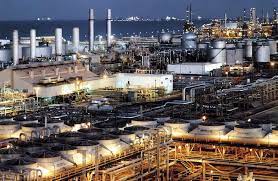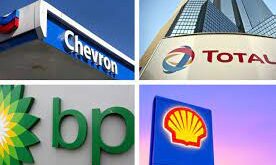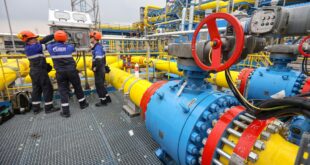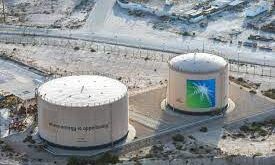As the OPEC+ group prepares to roll back all production cuts by the end of next month, analysts and the market are searching for the answer to the million-dollar question shrouded in mystery: How much more oil can Saudi Arabia actually produce? And how much into spare capacity is the world’s top crude oil exporter willing to tap?
Most analysts say that the UAE and Saudi Arabia are unlikely to tap much into their spare capacity regardless of the U.S. push for more oil. After all, a razor-thin global capacity cushion would make supply shocks even more shocking.
But the mystery surrounding Saudi Arabia’s actual oil capacity is just waiting to be unraveled–and has been for decades.
Following U.S. President Joe Biden’s trip to the Middle East, American officials expressed optimism that the Saudis and other Middle Eastern producers would take “a few more steps” to boost production.
“There is additional spare capacity. There is room for increased production,” Amos Hochstein, the special presidential coordinator for international energy affairs, said on CBS’s Face the Nation on July 17, without elaborating.
And going way back to 2005 when the specter of peak oil production was looming over the oil markets, Saudi Arabia itself assured the world that it could produce 15 million bpd for “decades”.
But the latest information coming out of Saudi Arabia is that it will not have additional capacity to increase production above the 13 million barrels per day (bpd) it has pledged to have by 2027, Saudi Crown Prince Mohammed bin Salman said earlier this month.
“The Kingdom will do its part in this regard, as it announced an increase in its production capacity to 13 million barrels per day, after which the Kingdom will not have any additional capacity to increase production,” the Crown Prince said at an Arab summit in Jeddah attended by President Biden.
One could argue that Saudi Arabia professed to be able to pump 15 million bpd way back when just to ease market fears–and perhaps more importantly, domestic fears–that global production and Saudi Aramco production were nearing the peak. It was important for Aramco to present itself to Riyadh as a capable market player. In 2008, Saudi Aramco had to defend itself against allegations that the oil crisis was caused by OPEC’s lack of spare capacity. It did so by claiming that it could boost its capacity to produce 12.5 million bpd by the end of 2009–a figure that is well above what it is producing now. Aramco also claimed that it could boost that capacity to 15 million bpd should the market need it, explains Wael Mahdi for Arab News this week.
And there were details, as Wael points out. Saudi Arabia’s then-oil minister Ali bin Ibrahim al-Naimi said at the time that Aramco could achieve this 15 million bpd by increasing the output at the Zuluf, Safaniyah, Berri, Khurais, and Shaybah fields by 900,000 bpd, 700,000 bpd, 300,000 bpd, 300,000 bpd, and 250,000 bpd respectively.
But Saudi Arabia later walked this back, arguing that it was just one proposed scenario, and not an actual solid program. The plans to increase Khurais and Shaybah were realized, but instead of boosting Saudi Arabia’s overall production, it merely went towards maintaining its 12 million bpd capacity.
That leaves Zuluf and Safaniyah, which could get Saudi Arabia to 13 million bpd, accounting for declines in other fields.
Saudi Arabia is now professing to have limited spare capacity of just 13 million bpd, although they are not even saying they have that now, they are saying that they could have it in the near future. Of the two seemingly disparate claims, this is the more likely scenario than believing that Aramco could increase its capacity to 15 million bpd.
Still, according to Mahdi, “the surface facilities of Aramco can allow it to produce up to 15 million barrels a day.” Of course, this doesn’t mean maximum sustained capacity to pump oil at that rate; rather, it references the capacity to potentially process such volumes not necessarily pumped in a single day.
Mahdi believes that “the world can still expect to see more oil from Saudi Arabia above the nameplate capacity”.
Analyst estimates about OPEC’s spare capacity vary. According to the IEA, the EIA, and OPEC, the cartel’s spare production capacity is around 3 million bpd. Some analysts, however, believe that the cartel has no more than 1 million bpd of spare capacity available.
“Saudi Arabia and OPEC+ have very limited spare capacity, and they have to manage it carefully,” Ben Cahill, senior fellow at the Center for Strategic and International Studies, told Bloomberg just before President Biden’s visit to the Middle East.
Per the OPEC+ deal, the Saudi oil production target is at 11.004 million bpd for August. The Kingdom has rarely reached this level, and not for a sustained period of time. So, it’s not certain that the Saudis have the ability to pump even 11 million bpd on a sustainable basis.
It’s even less certain that the Kingdom could quickly tap—if it wanted to—the 12 million bpd production capacity it has claimed it has.
But Saudi Arabia could boost oil supply to the market by drawing on its own stockpiles and by slashing direct crude burn at domestic power plants, thus freeing more crude oil for exports.
Industry sources have recently told Energy Intelligence that Saudi Arabia expects to have freed up to 1 million bpd of oil for exports by 2030 by cutting its direct oil use in power generation as it looks to replace petroleum liquids with gas-powered generation and renewables. The Kingdom currently generates 51% of its electricity from petroleum liquids and 49% from natural gas. By 2030, the Saudis plan on having renewables and gas generate 50% each of its power needs.
That’s for the long term. In the near term, Saudi Arabia is unlikely to tap too deeply into its spare capacity, considering that it’s pretty much one of the world’s last two holders of spare reserves that can be brought online within 30 days.
Even if dwindling, global spare capacity will be needed in the coming months as the world—despite fears of economic slowdown—hasn’t yet felt the full extent of the EU embargo on Russian oil, which kicks in at the end of this year.
 Iran Energy News Oil, Gas, Petrochemical and Energy Field Specialized Channel
Iran Energy News Oil, Gas, Petrochemical and Energy Field Specialized Channel




